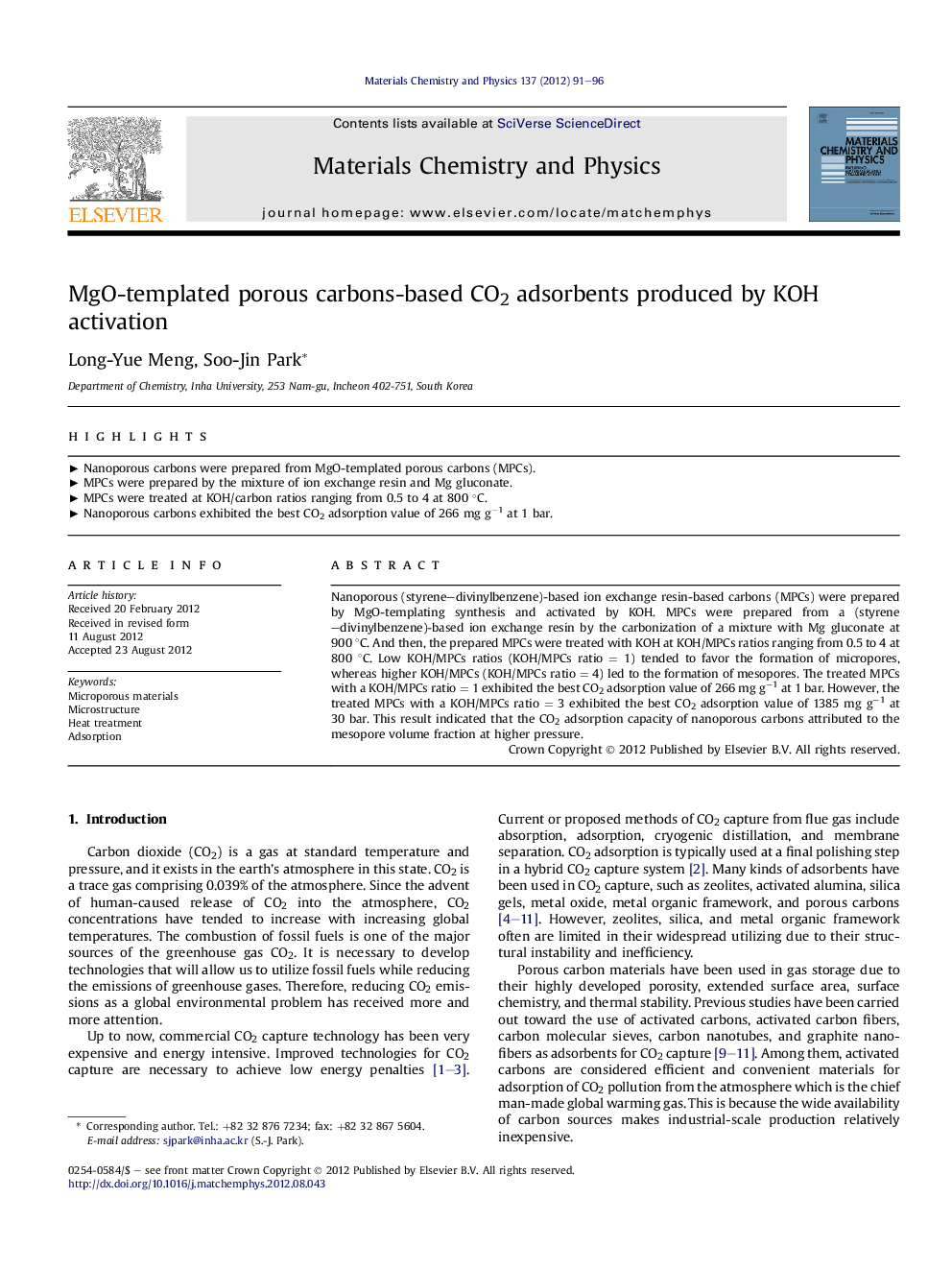| Article ID | Journal | Published Year | Pages | File Type |
|---|---|---|---|---|
| 1523825 | Materials Chemistry and Physics | 2012 | 6 Pages |
Nanoporous (styrene–divinylbenzene)-based ion exchange resin-based carbons (MPCs) were prepared by MgO-templating synthesis and activated by KOH. MPCs were prepared from a (styrene–divinylbenzene)-based ion exchange resin by the carbonization of a mixture with Mg gluconate at 900 °C. And then, the prepared MPCs were treated with KOH at KOH/MPCs ratios ranging from 0.5 to 4 at 800 °C. Low KOH/MPCs ratios (KOH/MPCs ratio = 1) tended to favor the formation of micropores, whereas higher KOH/MPCs (KOH/MPCs ratio = 4) led to the formation of mesopores. The treated MPCs with a KOH/MPCs ratio = 1 exhibited the best CO2 adsorption value of 266 mg g−1 at 1 bar. However, the treated MPCs with a KOH/MPCs ratio = 3 exhibited the best CO2 adsorption value of 1385 mg g−1 at 30 bar. This result indicated that the CO2 adsorption capacity of nanoporous carbons attributed to the mesopore volume fraction at higher pressure.
► Nanoporous carbons were prepared from MgO-templated porous carbons (MPCs). ► MPCs were prepared by the mixture of ion exchange resin and Mg gluconate. ► MPCs were treated at KOH/carbon ratios ranging from 0.5 to 4 at 800 °C. ► Nanoporous carbons exhibited the best CO2 adsorption value of 266 mg g−1 at 1 bar.
